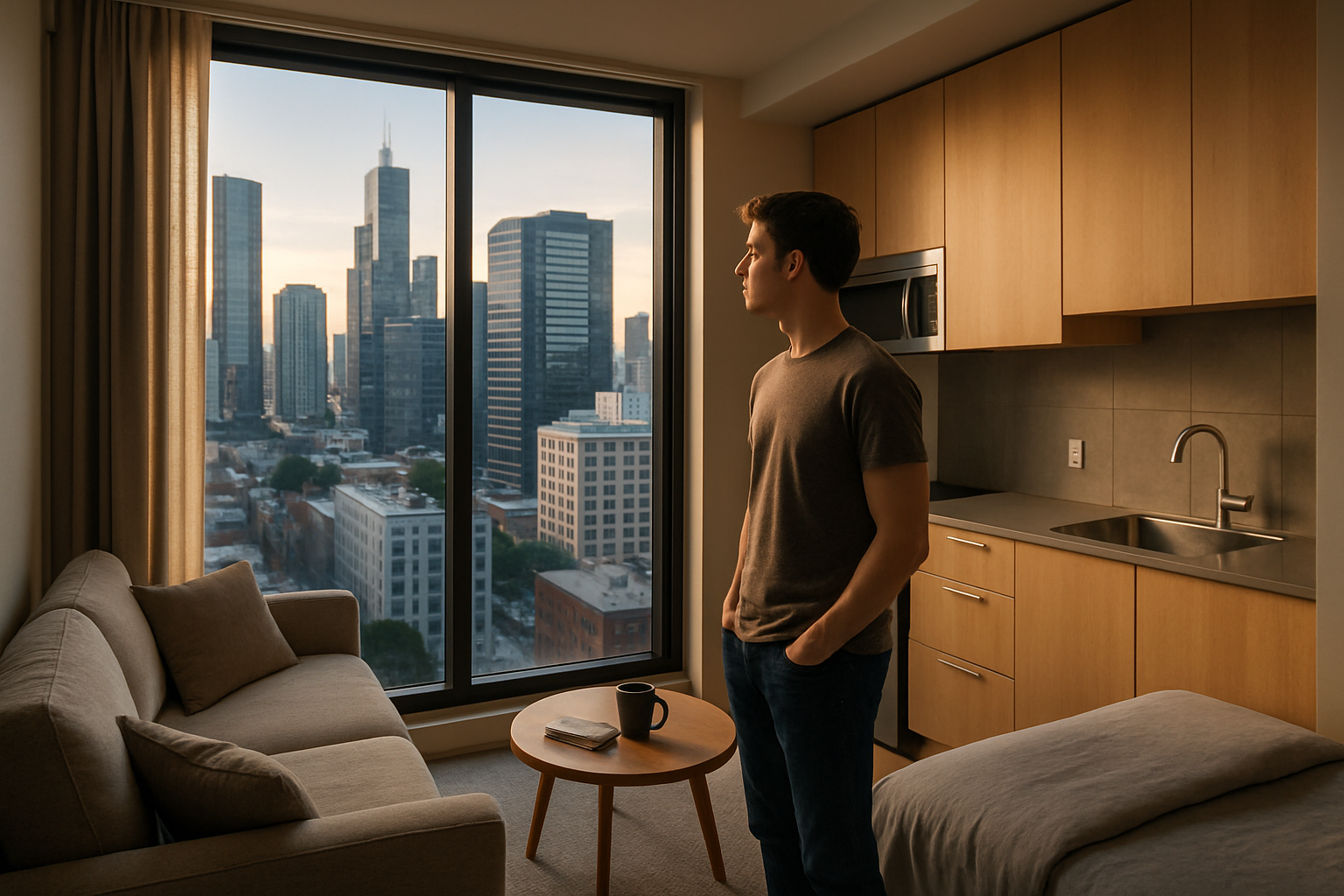Micro-Apartments: The Future of Urban Living?
In the ever-evolving landscape of real estate, a new trend is gaining momentum in major cities worldwide: micro-apartments. These compact living spaces, typically ranging from 200 to 400 square feet, are reshaping urban housing markets and challenging traditional notions of what constitutes a home. As property prices soar and city populations surge, micro-apartments offer a potential solution to the urban housing crunch, promising affordability and efficiency in prime locations.

The Genesis of Micro-Living
Micro-apartments trace their roots back to densely populated Asian cities like Tokyo and Hong Kong, where space has long been at a premium. In these urban centers, compact living spaces have been a necessity for decades. However, the modern micro-apartment trend in Western cities is a more recent phenomenon, driven by a perfect storm of economic, demographic, and cultural factors.
The 2008 financial crisis played a significant role in catalyzing the micro-apartment movement. As the housing market crashed and credit tightened, many young professionals and students found themselves priced out of traditional apartments in desirable urban locations. Developers and city officials began exploring alternatives to accommodate this demographic, leading to the rise of purpose-built micro-units in cities like New York, San Francisco, and Seattle.
The Economics of Small Spaces
From a financial perspective, micro-apartments present an intriguing proposition for both residents and investors. For tenants, these units offer an opportunity to live in prime urban locations at a fraction of the cost of traditional apartments. In cities like San Francisco, where the average rent for a one-bedroom apartment can exceed $3,000 per month, micro-units often rent for 20-30% less while providing access to the same amenities and locations.
For investors and developers, micro-apartments can yield higher returns per square foot compared to conventional units. The increased density allows for more units in a given building footprint, potentially leading to higher overall rental income. Additionally, the target demographic for micro-apartments – young professionals, students, and urban singles – tends to be more stable and less affected by economic downturns, providing a level of insulation against market volatility.
Design Innovations in Micro-Living
The success of micro-apartments hinges on intelligent design that maximizes every square inch of space. Architects and interior designers are pushing the boundaries of creativity to make these small spaces not just livable, but desirable. Multi-functional furniture, such as murphy beds that transform into desks or dining tables, is becoming standard in many micro-units.
Innovative storage solutions, like floor-to-ceiling built-in cabinets and under-floor compartments, help residents make the most of limited space. Some developers are even experimenting with modular designs that allow residents to reconfigure their living space throughout the day, transforming a bedroom into a living room or home office as needed.
The Social Implications of Micro-Living
While micro-apartments offer a practical solution to urban housing shortages, they also raise questions about quality of life and social dynamics. Critics argue that these small living spaces may negatively impact mental health and social interactions. However, proponents counter that well-designed micro-apartments can actually enhance community engagement by encouraging residents to utilize shared spaces and local amenities.
Many micro-apartment developments incorporate extensive communal areas, such as rooftop gardens, co-working spaces, and lounges, to foster a sense of community among residents. This shift towards shared amenities reflects a broader trend in urban living, where the concept of “home” extends beyond the four walls of one’s private space to encompass the neighborhood and city at large.
Regulatory Challenges and Market Adoption
Despite their potential benefits, micro-apartments face regulatory hurdles in many cities. Zoning laws, minimum square footage requirements, and building codes often need to be updated to accommodate these new housing types. Some cities, recognizing the need for diverse housing options, have begun to adapt their regulations. For instance, New York City launched a pilot program in 2013 to test micro-units, temporarily waiving certain zoning restrictions.
Market adoption of micro-apartments varies widely across different regions and demographics. In some cities, they’ve been embraced as a trendy, minimalist lifestyle choice, while in others, they’re viewed more as a necessary compromise in the face of housing shortages. The success of micro-apartment developments often depends on factors such as local housing market conditions, cultural attitudes towards space and privacy, and the quality of surrounding urban amenities.
The Future Outlook for Micro-Apartments
As urban populations continue to grow and housing affordability remains a pressing issue, micro-apartments are likely to play an increasingly important role in the real estate landscape. The concept is evolving beyond just small studios to include micro-suites with separate bedrooms and even micro-family units designed for couples with young children.
Technological advancements, such as smart home systems and virtual reality, may further enhance the appeal and functionality of micro-living spaces. For instance, VR technology could allow residents to virtually expand their living space or change their view, mitigating some of the psychological challenges associated with small spaces.
In conclusion, micro-apartments represent a significant shift in urban housing trends, offering a potential solution to the challenges of affordability and space constraints in major cities. While they may not be suitable for everyone, their growing popularity suggests that they will continue to shape the future of urban real estate. As cities grapple with housing shortages and changing demographics, micro-apartments stand as a testament to the real estate industry’s capacity for innovation and adaptation in the face of evolving urban needs.





